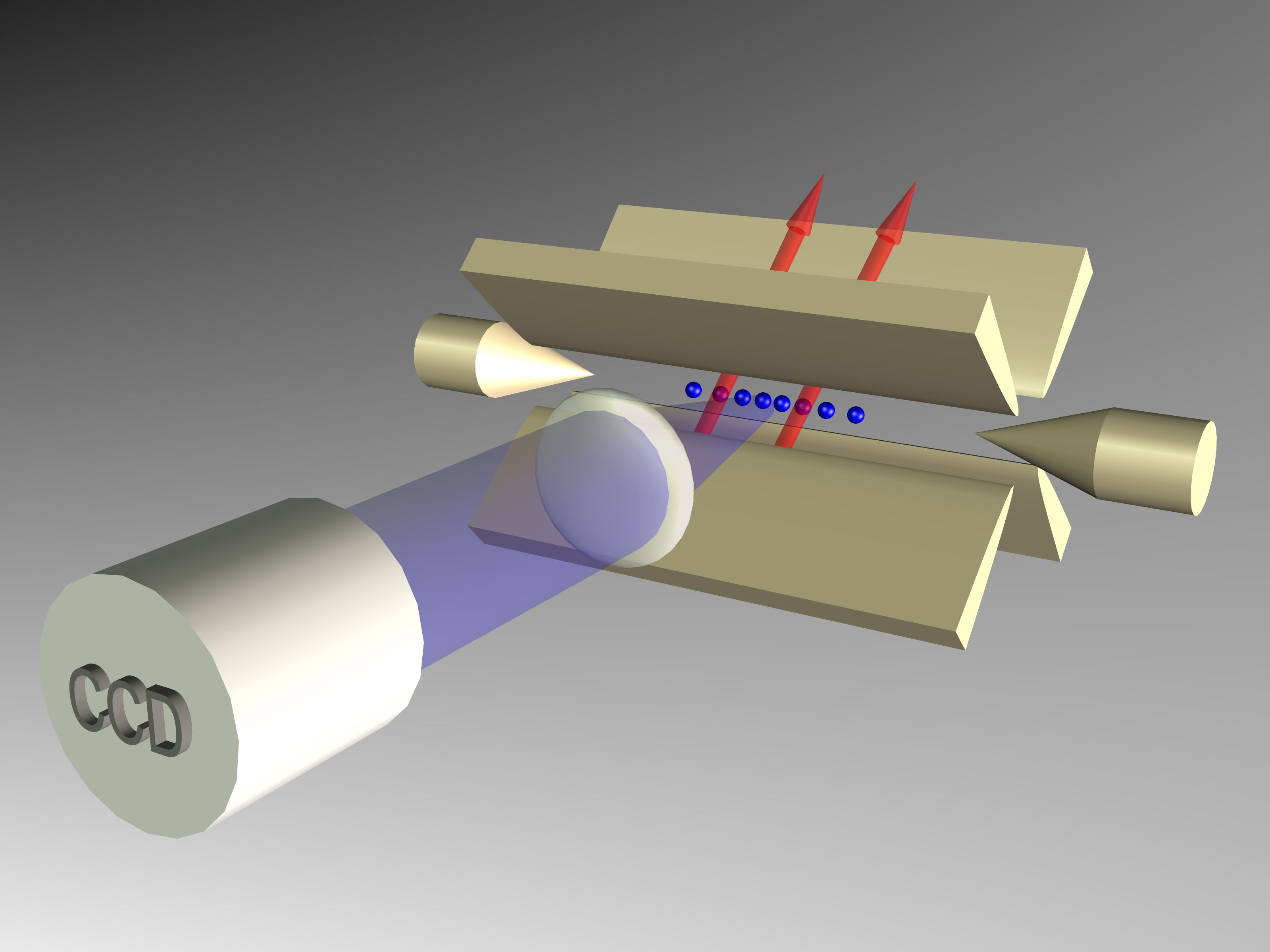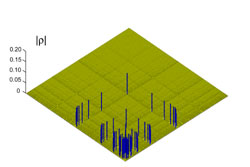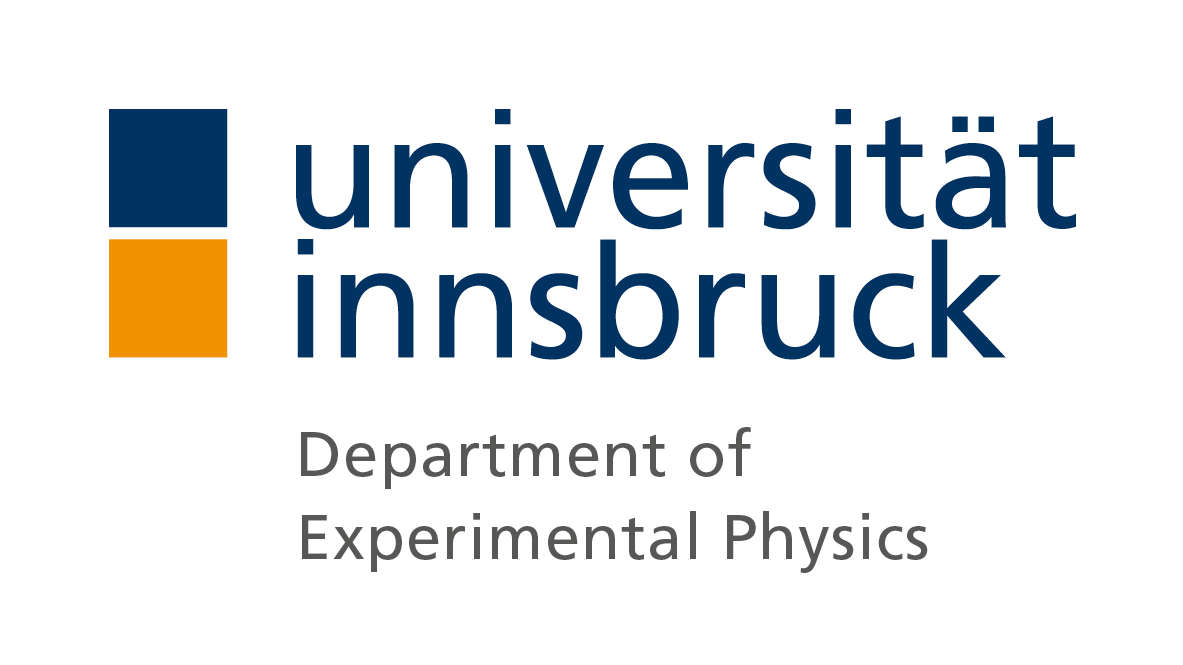Scalable Multi-Particle Entanglement with Trapped Ions - Insights into a Quantum-Byte
Entanglement is one of the most fascinating features of quantum mechanics. If two or more particles are entangled with each other, their elementary aspects are inextricably interwoven such that they can no longer be regarded as being independent. This fact leads to stunning consequences after spacially separating the particles such that they can be in fact observed independently. Already for two particles the emerging correlations are intriguing. These properties can now be investigated with up to eight entangled particles. However, entangled states or not only of academic interest. A quantum computer, that exploits the laws of quantum mechanics to perform certain calculations more efficiently than today's classical computers, is usually implemented uses such states. A glance at these highly entangled states is therefore in some way a glance into the inmost part of a future quantum computer. The recent experimental realization of entanglement of up to eight quantum particles allows for the first time a closer look at the weird quantum world of the quantum byte ("qubyte").
Ion Traps for Quantum Information
 In our experiments, we encode quantum mechanical information in electromagnetically trapped calcium ions. We use the the electronic ground state |S> and a long-lived excited state |D> (lifetime ~1s). The ions are shielded from external perturbations in a vacuum vessel and the quantum information is written into the ions and processed with laser pulses. Since the ions are separated by only 5 parts in a thousand of a millimeter, they sense each other via their repulsive electrostatic interaction and therefore allow an information transfer from ion to ion (according to the proposal by I. Cirac and P. Zoller). The ion's internal states are read out by collecting fluorescence light with a highly sensitive CCD camera that has sufficient spatial resultion to distinguish between individual ions.
In our experiments, we encode quantum mechanical information in electromagnetically trapped calcium ions. We use the the electronic ground state |S> and a long-lived excited state |D> (lifetime ~1s). The ions are shielded from external perturbations in a vacuum vessel and the quantum information is written into the ions and processed with laser pulses. Since the ions are separated by only 5 parts in a thousand of a millimeter, they sense each other via their repulsive electrostatic interaction and therefore allow an information transfer from ion to ion (according to the proposal by I. Cirac and P. Zoller). The ion's internal states are read out by collecting fluorescence light with a highly sensitive CCD camera that has sufficient spatial resultion to distinguish between individual ions.

W-States with many Ions
In our experiments, we generate so-called W-states. They are represented by a quantum-mechanical superposition of the following type:
![]()
Each part of the superposition contains precisely one ion in the |S> state and all other in the |D> state, such that during fluorescence detection, only one ion (the one in the |S> state) fluoresces. In such a state all particles are entangled with each other in a way that it is impossible to regard any sub-group of ions as an isolated and independent system. In repeated measurements on an identically prepared quantum state, light will always be emitted by a different ion, based on the truly stochastic laws of quantum mechanics. The concept of quantum mechanics is only useful if the correlations persist under a different "viewing angle". This can be confirmed by investigating if e.g. the first ion is in a superposition state of the form ![]() . Our characterization of the created quantum-mechanical states goes far beyond the proof of entanglement.
. Our characterization of the created quantum-mechanical states goes far beyond the proof of entanglement.

We were able to reconstruct the full density matrix (i.e. the full quantum mechanical information one can possibly obtain from a system) of all created states (see Figure).
This is the first time that an experimentally determined density matrix of that size has become available for theoretical analysis. For a quantum system consiting of eight qubits (quantum bits) the density matrix consists of 256x256 = 65536 complex numbers, that required more than 650.000 individual measurements. Such a measurement takes up to 10 hours, although we record about 25-50 data points per second. An ideal W state of N ions is represented by a 2N x 2N density matrix and contains exactly N x N non-zero elements, as marked in the Figure.
The Figure already indicates that a quantum-mechanical byte contains considerably more information than the numbers from 0 to 255 that can be encoded in a classical byte. As a matter of fact, the reconstruction of the density matrix from the measured values took as long as a weekend on the University's computer cluster (many thanks to the mathematicians A. Ostermann and M. Thalhammer for their support on the algorithms).
Entanglement of the Quantum Byte
Insights into fundamental properties of multi-particle entanglement can be gained by investigating the measured density matrix. Whereas entanglement measures for two particles are well-known, criteria for more particles are less well understood. Not only for this reason is the experimentally determined density matrix an important test bed for theoretical physicists. We have evaluated our data in close collaboration with the theoreticians W. Dür and O. Gühne, who work at the Institute for Quantum Optics and Quantum Information. For all measured density matricies, i.e. for 4, 5, 6, 7 and for 8 ion W states, we were able to demonstrate the existence of so-called multi-partite entanglement. We have tested the criterion of "destillability" of multi-partite entanglement as well as the stronger requirement that the system can not be divided into subsystems that show no entanglement. That indeed allowed a first glance into an entangled quantum byte. Further Experiments: Simultaneously to our experiments, the US group of D. Wineland at NIST in Boulder, Colorado, have realized entanglement of 6 ions. They created a different class of entangled states, the so-called GHZ states. GHZ states are superpositions of two quantum states for which the knowledge of the state of a single particle immediately reveals the state of all the others:
![]()
These states are therefore a realization of the famous "Schrödinger cat".
The type of entanglement in this system is fundamentally different from the entanglement properties of the W states. Wheras GHZ states are extremely fragile (entanglement is lost after the measurement of a single particle), W states are particularly robust. After measuring a single particle, a W state of N particles loses its entanglement with a probability of only 1/N. Therefore, both types of entangled states have their very own characteristics and properties.
Literatur
"Scalable multi-particle entanglement of trapped ions", H. Häffner, W. Hänsel, C. F. Roos, J. Benhelm, D. Chek–al–kar, M. Chwalla, T. Körber, U. D. Rapol, M. Riebe, P. O. Schmidt, C. Becher, O. Gühne, W. Dür & R. Blatt, Nature 438, 643-646 (1 December 2005)
"Creation of a six-atom 'Schrödinger cat' state", D. Leibfried, E. Knill, S. Seidelin, J. Britton, R. B. Blakestad, J. Chiaverini, D. B. Hume, W. M. Itano, J. D. Jost, C. Langer, R. Ozeri, R. Reichle and D. J. Wineland, Nature 438, 639-642 (1 December 2005)
We are financially supported by the Austrian academy of sciences, Universität Innsbruck, the Austrian Science Fund (FWF) within the program "Control and Measurement of Coherent Quantum Systems", the European networks QGATES, CONQUEST, PROSECCO, QUPRODIS and OLAQUI, by the Institute for Quantum Optics and Quantum Information, the German Science Foundation (DFG) and ARO. We thank P. Pham for the pulse modulation programmer, and A. Ostermann, M. Thalhammer and M. Jezek for help with the reconstruction of the density matrix.


